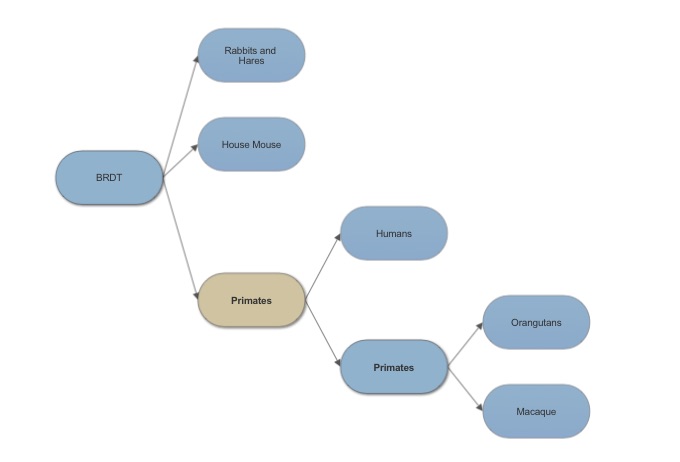The human genome has 56 bromodomains across 42 proteins. Bromodomains are found in mammals. Bromodomain testis specific (BRDT) also known as known as CT9 and RING3-like protein and belongs to the bromodomain extra terminal (BET) family. BRDT is expressed in pachytene and diplotene spermatocytes and round spermatids.
You may include any references to papers as in: the use of JSmol in Proteopedia [1] or to the article describing Jmol [2] to the rescue.
Function
Bromodomain testis specific is a monomer that is only fully functional as a dimer. BRDT is a transcriptional regulator for gene expression during spermatogenesis.
BRDT and fertility
Loss of one of the bromodomains or even single point mutations leads to decrease spermatogenesis and defective sperm. If both bromodomains are knocked out it leads to loss of fertility.
Relevance
Male contraception has been eluding scientists for years and is a desired area to prevent unplanned pregnancies. In studies of an anti-cancer drug triazolotheinodiaepine known as JQ1 that inhibits BRD4 in cancer pathogenesis. In experiments in mice it is seen, due to structural similarities, JQ1 blocks the production of sperm in testes. The binding of JQ1 in the acetyl-lysine pocket prevents recognition of acetylated histone H4KAC4. JQ1 in studies is not seen to affect hormone levels, mating behaviors or harmful effects to eventual offspring. Also JQ1 is not seen to cause sterility in mice. The effects of JQ1 on fertility are reversible and dose and time dependent effects on fertility. In mice it reduces size of testis, seminiferous tubes, and number of spermatozoa as well as the mobility of spermatozoa.

Analysis of Structure
The functional unit for BRDT is two bromodomain motifs, each monomer is composed of 4 anti-parallel alpha helixes. At the end of the helix bundles is the acetylated-lysine binding site binding site. BRDT belongs to the histone acetyltransferase superfamily. BRDT is tissue restricted to the testis. BRDT activates the histones by hyper acetylation at the promoter of genes leading to condensed acetylated chromatin of a haploid spermatid.
Analysis of related Sequences
Bromodomain testis specific shares 84% sequence similarity to that of bromodomain containing protein for that of zebrafish.
Evolution of BRDT
 Looking at the evolution of BRDT it is easy to see why mice are a choice of animal model for assessing fertility affects due to BRDT.
This is a sample scene created with SAT to by Group, and another to make of the protein. You can make your own scenes on SAT starting from scratch or loading and editing one of these sample scenes.
Looking at the evolution of BRDT it is easy to see why mice are a choice of animal model for assessing fertility affects due to BRDT.
This is a sample scene created with SAT to by Group, and another to make of the protein. You can make your own scenes on SAT starting from scratch or loading and editing one of these sample scenes.


